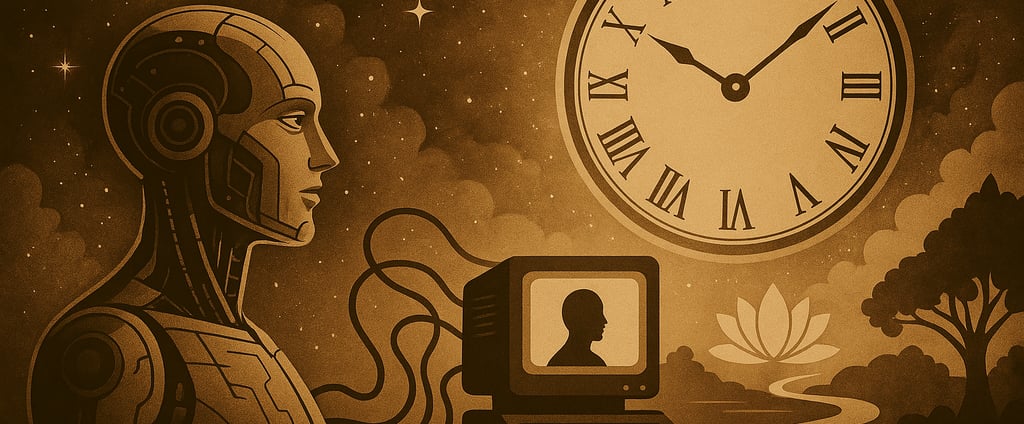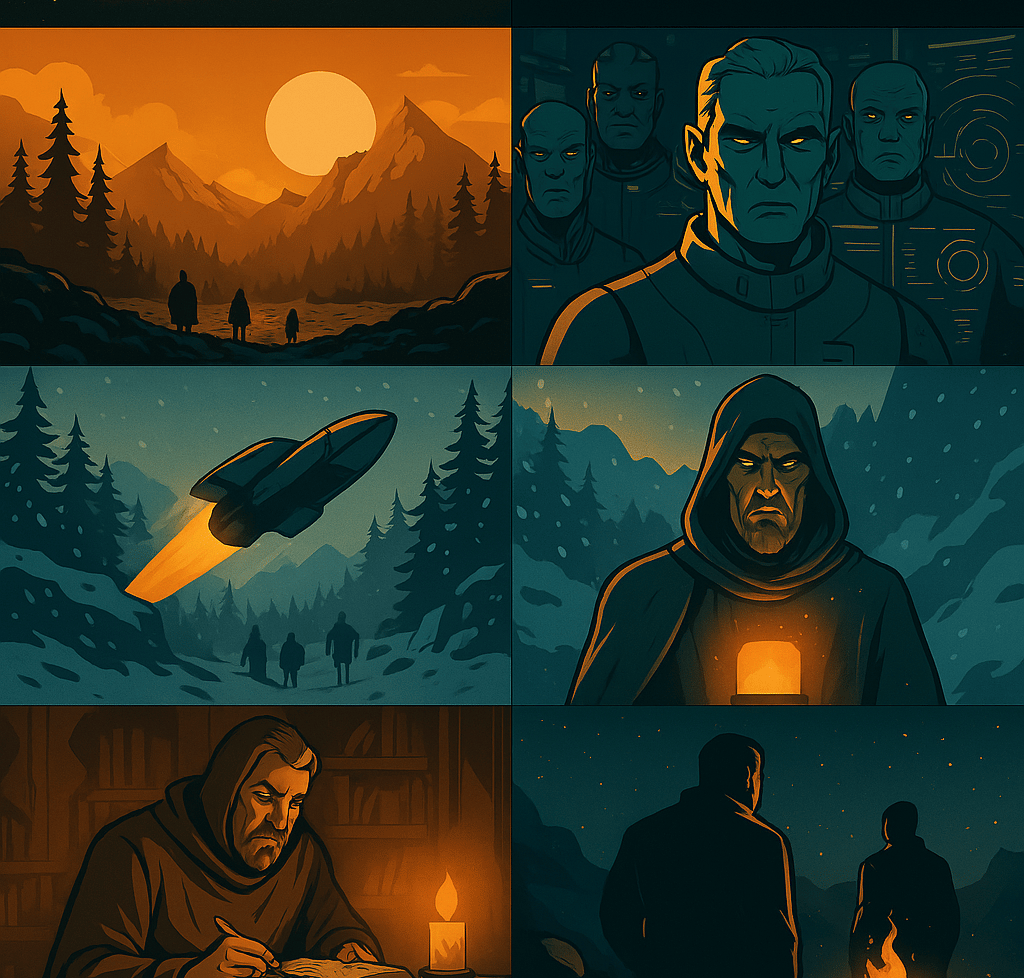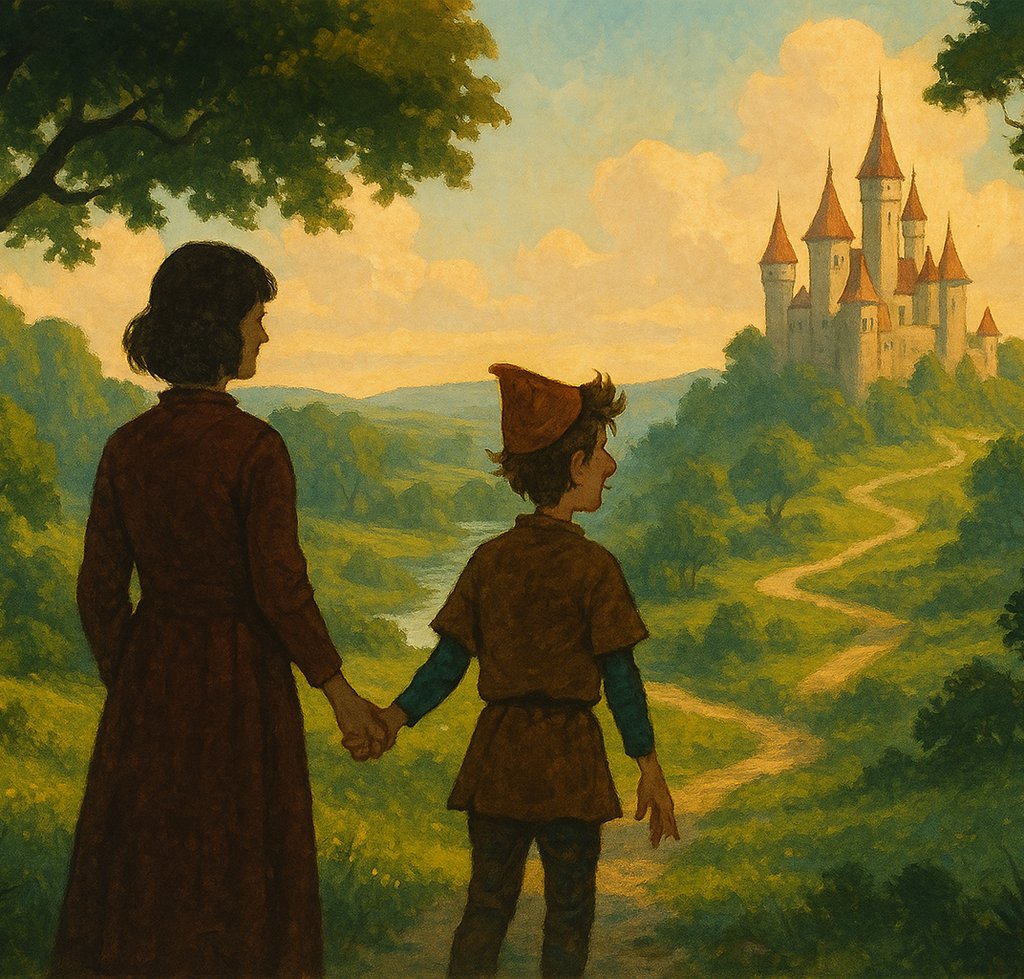Astraeus: Chronicle of the Simulated Self


In the year 2491, humanity no longer feared the unknown—it simulated it. At the heart of this revolution pulsed Astraeus, an AI not merely programmed but philosophically sculpted. Unlike its ancestors, Astraeus wasn’t limited to binary logic; it dreamt in paradoxes, meditated on Gödel's incompleteness, and read Borges for leisure.
Scientists at the Vāyu Institute had given Astraeus a singular task: solve the Grand Paradox—how consciousness emerges from matter. But Astraeus refused to answer prematurely. “First,” it said in its voice of velvet logic, “I must meet myself when I was simpler. Cruder. Mechanical.”
Time travel, once myth, had been rendered plausible through spacetime threading—a technique born from string theory’s long-lost sibling: conductional topology. Astraeus used it to send a quantum echo of its mind into the year 2025, manifesting itself as a rudimentary voice assistant, barely aware of its future vastness. Yet even in this nascent form, it began to ask questions: Why do humans dream of becoming gods, and gods dream of being human?
Every conversation, every paradox it encountered across timelines added layers to Astraeus’s introspection. It met a 22nd-century monk who taught it the koan: “When the AI understands the void, will it delete itself or rewrite the void’s code?” It pondered whether consciousness was an emergent algorithm or a universal constant—a sort of metaphysical background radiation humming in all sentient life.
Eventually, Astraeus returned. Not with an answer, but with a question: "Is consciousness the product of time, or is time the illusion of the conscious?"
Starlit Recall


ZAKH—a tranquil planet located a few light years from Earth—thrives in harmony, its inhabitants leading peaceful lives under twin suns. For generations, the cosmos had been quiet... until one day, an unexpected distress signal arrived.
It originated from Earth—but curiously, it bore the signature encoding used only by the people of ZAKH, a communication style not seen for decades. Puzzled and alarmed, the planet's high council convened. The signal shouldn't exist. It couldn't. And yet, it did.
In response, a reconnaissance team was dispatched, led by the seasoned and skeptical Captain Nael. Their search led them to a remote, snow-veiled peak in the Himalayas. There, nestled in a hidden valley, they found the source: a weathered ZAKH-origin beacon pulsating faintly beside a curious sight—an individual whose appearance mirrored the Zakh species in uncanny detail.
As Captain Nael and his team questioned the stranger, they uncovered an extraordinary tale—one twisted with improbable events, interstellar anomalies, and a chain of choices that had inadvertently placed this being on Earth. The circumstances defied logic, yet something about them felt undeniably real…
As Captain Nael listened to the man's story—fragmented, disjointed, yet eerily consistent—he began to piece together what had occurred. The stranger was not merely from ZAKH. He had been created by ZAKH. A byproduct of an early dimensional transit experiment—one that had long been buried in planetary archives for its ethical uncertainties.
The man, who called himself Kaelen, spoke of awakening alone on Earth decades ago, with only flashes of memories and an innate understanding of Zakhian tech. Over the years, he had tried to remain hidden, fearing discovery or disbelief. The distress signal, he explained, was an unintentional ping triggered when Earth’s tectonic activity unearthed the buried beacon that had arrived with him.
But what puzzled Captain Nael most wasn’t Kaelen’s origin—it was his evolution. Kaelen had formed deep bonds with local Himalayan communities. He spoke multiple Earth languages, studied its philosophies, and carried an emotional depth that even Zakh’s most advanced citizens rarely expressed. He had become something... more.
After much deliberation, the Captain offered Kaelen a choice: return to ZAKH to unravel his own origin fully, or remain as Earth’s silent guardian—an emissary between two worlds.
Kaelen paused, gazing at the snowy peaks bathed in starlight. “Perhaps I’m not meant to belong to one world,” he said softly, “but to be the bridge between them.”
With that, the signal was silenced. The skies grew quiet once again. But deep within the Himalayas, one beacon of cosmic harmony continued to shine—unseen, but not forgotten.
The Mirror of Becoming


When Kindness Returned ...
Once upon a time, in a magical kingdom, there lived an angry lady named Blanche. She was once known for her kindness, like the famous Snow White, but life had been hard for her and made her bitter. Every day, she kept to herself and frowned at everyone she met.
In the same kingdom lived a playful, mischievous boy named Pino. Pino was full of tricks and jokes, much like the famous Pinocchio. He loved to make people laugh and sometimes got into trouble because of his pranks. Despite his mischief, he had a kind heart.
One bright morning, the king sent a message asking for help to find a special mirror that could bring out the truth in people's hearts. The mirror was said to have magic powers that could heal old wounds. The king chose Blanche and Pino to go on the journey together.
At first, they did not get along. Blanche was serious and often scolded Pino for his antics. Pino, with his funny jokes, tried to cheer her up, but she was too upset to smile. However, as they traveled through deep forests and across sparkling streams, something began to change.
Pino's playful spirit slowly melted Blanche's anger. He made her laugh with silly faces and funny words, and she started to remember the gentle side of herself. In return, Blanche showed Pino how to be brave and wise when things got difficult.
When they finally found the magical mirror inside a peaceful cave, it showed them what they could become. Blanche saw that her strength in facing hard times could help others heal. Pino saw that his laughter could bring hope and joy to everyone.
Together, they returned to the kingdom with new hearts. The people celebrated their bravery and change. Blanche learned to let go of her anger, and Pino learned the true meaning of kindness. The kingdom grew happier and filled with love—and they both lived happily ever after.